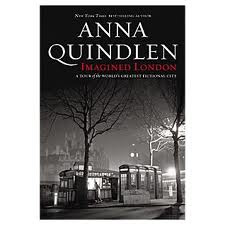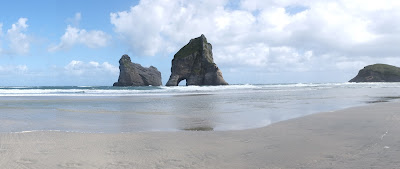Wondrous Words Wednesday is a fabulous weekly meme hosted by Bermuda Onion, where we share new (to us) words that we’ve encountered in our weekly reading.
I recently read Anna Quindlen's Imagined London. As befits a Pulitzer Prize winning author there was quite a vocabulary, and more than a few new words for me.
1. Catafalque (Noun)
On that first visit to London one of the first stops I made was in Westminster Abbey, at the catafalque of Elizabeth I; in my girlhood, before anyone used (and overused) the term "role model," that distant princess was mine, refusing to be demoted and undervalued because of her gender, determined to be the greatest ruler England had ever known and making a go of it, too.
A raised bier, box, or similar platform, often moveable, that is used to support the casket, coffin, or body of the deceased during a funeral or memorial service. Wiki.
2. Ishmaelites (Noun)
Untidy, full of Greeks, Ishmaelites, cats, Italians, tomatoes, restaurants, organs, coloured stuffs, queer names, people looking out of upper windows, it dwells remote from the British Body Politic.
In the Bible, the son of Abraham who was cast out after the birth of Isaac. He is traditionally considered to be the forebear of the Arabs. The Free Dictionary.
3. Scrim (Noun)
Perhaps it was that I wanted to see what I had learned, what I had read, what I had imagined, that I would never be able to see the city of London without seeing it through the overarching scrim of every description of it I had read before.
An open-weave muslin or hessian fabric, used in upholstery, lining, building, and in the theater to creat the illusion of a solid wall or to suggest haziness, etc, according to the lighting. The Free Dictionary.
4. Fealty (Noun)
But little is left of the Empire except a few stray Caribbean islands, the good-natured fealty of the Canadians, and the fact that, according to one cab driver, the second most common dinner dish in the U.K (after roast beef and Yorkshire pudding) is tikka masala.
1. a) The fidelity owed by a vassal to his feudal lord.
b) The oath of such fidelity.
2. Faithfulness; allegiance. The Free Dictionary.
5. Bowfront (Adjective)
6. Greensward (Noun)
But Park Lane was savaged in the early part of the last century, the bowfront houses with gardens running right down to the edge of the greensward largely demolised and the road along Hyde Park widened into a major autobahn.
Bowfront- having an outward curving front.
Greensward- ground that is green with grass; turf.
7. Jeremiad (Noun)
The jeremiad that followed about the effects of immigration on the economy, the crime rate, and unemployment was as old as time, and as literature.
A literary work or speech expressing a bitter lament or a righteous prophecy of doom.
8. Foursquare (Adverb)
The long graceful rows of identical buildings, standing foursquare to the street, give nothing away about the lives inside except, perhaps, that on some cosmetic level they are lives well lived.
In a forthright manner; squarely.












































